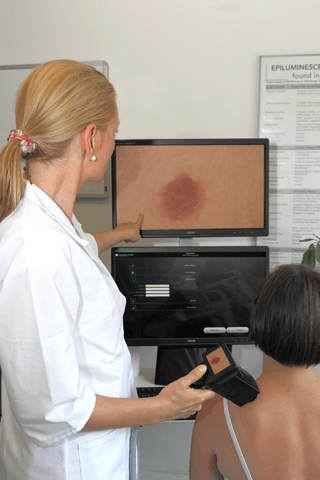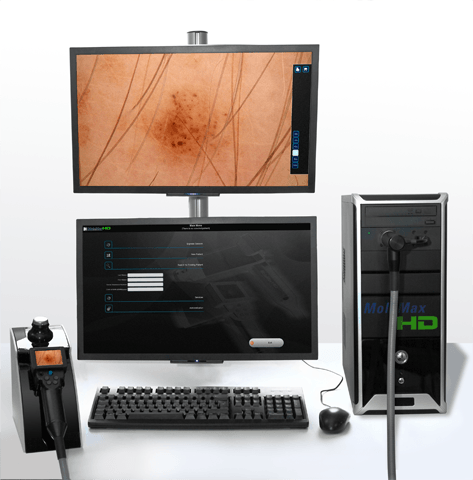Skin Cancer Checks
Dr Flora Skin Services
- Skin cancer
checks by a qualified doctor.
- Mole mapping
- Surgical skin cancer removal.
- Skin tag removal.
- Skin bump and lump removal
- Wart Removal
- Biopsies
- Photodynamic therapy
Types Of Skin Cancer
There are 3 main types of Skin Cancer:
- Basal Cell Carcinoma (BCC),
- Squamous Cell Carcinoma (SCC) and
- Melanoma.
Melanoma is considered the most serious type of Skin Cancer and Australia has the highest rates of melanoma in the world!
Skin Cancers don’t all look the same, but there are some signs to look out for:
- A spot that is different from other spots on your skin.
- A spot, mole freckle that has changed in size, shape or colour.
- A sore that doesn’t heal.
- A spot that bleeds.
Not all spots that appear on your skin are cancerous. However, freckles, moles or sunspots are warning signs that your skin has had too much sun exposure and you may be at greater risk of developing skin cancer.
Moles are very common and a mole (naevus) is a normal growth on the skin. Some people have many moles on their body and this can run in families. Overexposure to the sun, especially in childhood can also lead to more moles growing on the skin.
Moles that have irregular shape and an uneven colour are called dysplastic naevi. People with many of these are at greater risk of developing melanoma.
Red scaly spots on the skin that feel rough are called sunspots (Solar Keratoses). They usually occur in people aged over 40 on areas of skin frequently exposed to the sun, such as the head, neck, hands, forearms and legs. Rarely Solar Keratoses may develop into SCC.
Dr Flora Onyeizugbo has completed her Certificate in Skin Cancer Medicine & Surgery. If you have been thinking about having a skin check but never got around to it then pick up the phone now and make an appointment. It could well save your life!
How to check for skin cancer
Worried about a mole?
Self Examination:
Go to this link
and follow the steps that the Cancer Council of Australia recommend. The Cancer Council page on self examination is excellent. If you have any doubts or concerns, please call us immediately on 08 8178 0087 and book an appointment for a skin health check.
You can also download this skin check guide from the Cancer Council of Australia.
Why molecheck?
Molecheck and diagnosis by a qualified doctor
Molecheck is a system that uses dermoscopy to achieve accurate mole mapping of the skin. This assessment is carried out at our practice in Blackwood.
Our molechecks are carried out by Dr. Flora who is a properly trained and qualified doctor in skin cancer detection.
Whole Body photography
About half of all melanomas emerge on plain skin. This can be detected if we have a photo record of the skin for future comparison.
Dermoscopy
Dermoscopy is the technology that lets us look through the skin to its structures, allowing us to clearly diagnose moles. You can see what is not possible to see with the naked eye. Using dermoscopy the diagnosis rate for melanomas increases from 40-50% to over 90%.
Every mole and mark is assessed
A dermoscope is used to assess every mole on the body. Not all early melanomas are visible to the naked eye. Some melanomas can be as small as 1mm in diameter, and still be detected.
Serial Monitoring
Photos of all moles with abnormal structures are saved and can be compared to future regular mole checks. This allows the best possible chance of early detection of melanoma. It also reduces the number of unnecessary surgical mole removals.
Healthy moles do not change or change in predictable ways, whereas melanomas change and rewrite their structure. Molechecks can detect these changes to allow early treatment.
Serial monitoring enables early detection of melanomas, and takes diagnosis to over 95%.


Have someone check for moles on had to see areas of your body.
